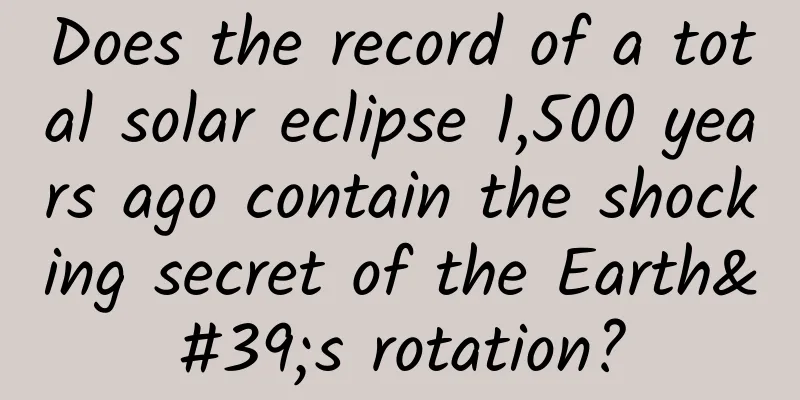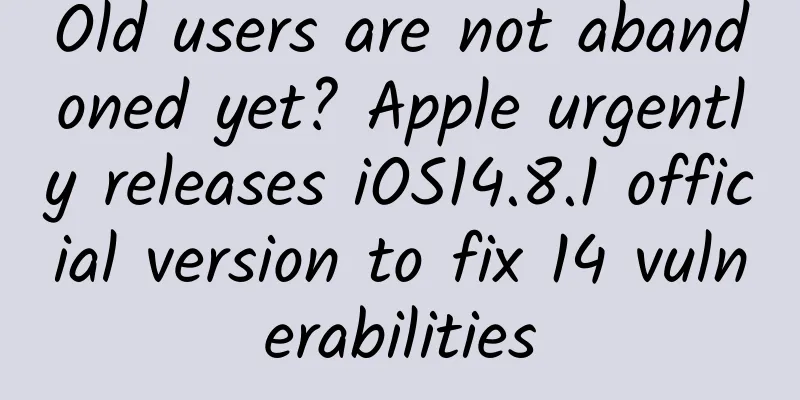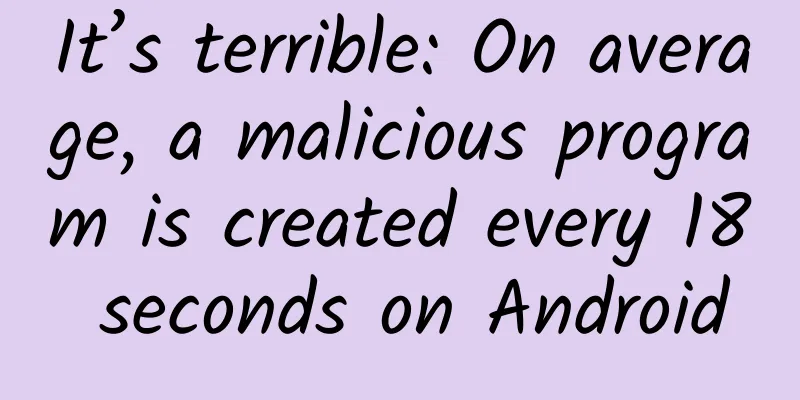Does the record of a total solar eclipse 1,500 years ago contain the shocking secret of the Earth's rotation?

|
Ancient eclipse records reveal changes in Earth's rotation The researchers searched historical documents dating back to the 4th century for records of a total solar eclipse. (Illustration: This is an ancient record of a total solar eclipse, taken in Casper, Wyoming. Source: ESA/MP Ayucar, CC BY-SA 3.0 IGO) The records of solar eclipse observations from 1,500 years ago show the history of the Earth's rotation and the changes in the Earth's movement in modern human history. By searching records from the 4th to 7th centuries of the Eastern Roman Empire, the continuation of the Eastern Roman Empire after the fall of the Western Roman Empire, the researchers confirmed five records of solar eclipses that occurred near the western coast of the Mediterranean Sea, and determined the possible times and locations of these eclipses. Prior to this, there were very few records of solar eclipses during this period. Because eclipses provide information about the motion of the Earth, these eclipse records are important tools for understanding the variability of Earth's rotation throughout history. However, our ancestors recorded astronomical events without annotating the key information that today's astronomers need, so it is often difficult to find the correct time, place, and range of historical eclipses. "Although most first-hand witnesses of this period have been lost, quotations and translations of these events provide valuable information," said Akijū Murata, an assistant professor at the University of Tsukuba. "In addition to reliable locations and timely information, we also need to confirm the timing of the total eclipse, which is the time span from daylight to nightfall until the stars appear in the sky." The team identified five total solar eclipses that occurred in the eastern Mediterranean region, in 346, 418, 484, 601, and 693 A.D. The new findings provide details on the difference between using the Earth's rotation as a time reference and not using the Earth's rotation as a time reference, or ∆t, which represents the length of an Earth day. As an example of the impact of the new research, records show that on July 19, 418 AD, there was a solar eclipse so complete that the stars were clearly visible in the sky. The eclipse was viewed from Constantinople, the former capital of the Roman Empire, now located in Istanbul, Turkey. "The earlier ∆t models suggested that Constantinople was not in the path of the total eclipse, but that eclipse was special in that the moon completely covered the sun for observers in the area. Therefore, this ancient record of a total eclipse means that the ∆t in the fifth century must have changed. Models of ∆t for later centuries also need to be adjusted based on other newly discovered records." "Our new Δt data narrow the range and suggest that the marginal Δt values for the fifth century should be adjusted upward, while those for the sixth and seventh centuries should be adjusted downward," Murata said. Detailed corrections to Earth's rotation also help scientists understand other global phenomena in history, including changes in sea level and the volume of global ice. 【Related tasks】 Earth is the third planet from the Sun and home to all known life in the universe. Although water can be found in large quantities throughout the solar system, only Earth can sustain liquid water. About 70.8% of Earth's surface is made up of ocean, with polar ice, lakes and rivers accounting for only a small portion. The remaining 29.2% of Earth's surface is land, including continents and islands. Earth's surface is made up of several slowly moving tectonic plates that interact to form mountain ranges, volcanoes and earthquakes. Earth's liquid outer core generates a magnetic field that shapes Earth's magnetosphere, which deflects the destructive solar wind. The Moon is Earth's only natural satellite. It is the fifth largest satellite in the Solar System. The Moon is the largest and most massive satellite of its parent planet, with a diameter one-quarter that of Earth. The Moon is a planetary-mass body with a variety of lunar rocks on its surface, which qualifies it as a satellite under the geophysical definition. The Moon is larger than all the known dwarf planets in the Solar System. It has no atmosphere, hydrosphere, or strong magnetic field. Its surface gravity is about one-sixth that of Earth, at 0.1654 g, while Jupiter's moon Io is the only known satellite in the Solar System with a higher surface gravity and density than the Moon. BY:Robert Lea FY: Chen Mai Mai If there is any infringement of related content, please contact the author to delete it after the work is published. Please obtain authorization for reprinting, and pay attention to maintaining integrity and indicating the source |
<<: The famous desert "life-saving tree" is also a green "oxygen pump"
>>: The killer whale keeps hitting the pool wall, and you say it's just playing?
Recommend
Feng Shui doesn't require help from others, Guannan teaches you how to calculate Feng Shui
Album Introduction If you are—— ◎The newly marrie...
Real scene or AI-generated? The sharp eyes of identifying "Virtual Video" are here! The accuracy rate is as high as 93.7%
Today, AI video generation tools are changing ind...
This may be the only lizard with an oxygen tank
Produced by: Science Popularization China Author:...
Who decides to breathe? The mystery of the production of oxygen in the early Earth
Produced by: Science Popularization China Author:...
What is sleep paralysis? People who are often "pressed" should be careful!
Ms. Li, 24 years old, often works overtime and st...
ALS patient tweets: Hello, world!
Recently, domestic and foreign media suddenly bro...
How to make money in 2021? A course to earn 70,000 yuan a month with Excel!
25 exquisite video lessons, with real teachers te...
Do you sleep well because of snoring? This disease not only affects your sleep, but may also cause these harms
Sleep apnea syndrome is a common sleep disorder t...
Short video live streaming sales: How did live streaming achieve sales of over 100 million yuan?
When was the first time you learned about short v...
How to acquire customers at low cost? A collection of Internet finance promotion tactics!
This article hopes to help entry-level product ma...
Breaking through the limits, electric vehicles accelerate again
With the development of the past year, the world ...
Why Are Your Facebook Ads Burning Money So Fast?
When you run Facebook ads , one of the most impor...
Yuzu Investment Classroom Series Courses (Third Phase + Fourth Phase + Fifth Phase + Sixth Phase + Highlights Edition)
Resource introduction of the Yuzu Investment Clas...
Improve iPhone's high battery consumption in iOS 7.1
The iPhone's small battery capacity, coupled w...
What are the promotion strategies for Baidu's mobile bidding? Things to note when promoting on mobile devices!
Detail 1: Target customers search at different ti...









